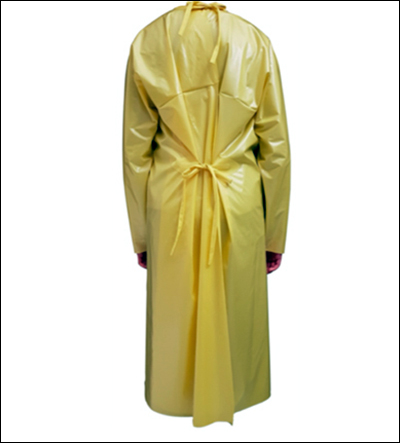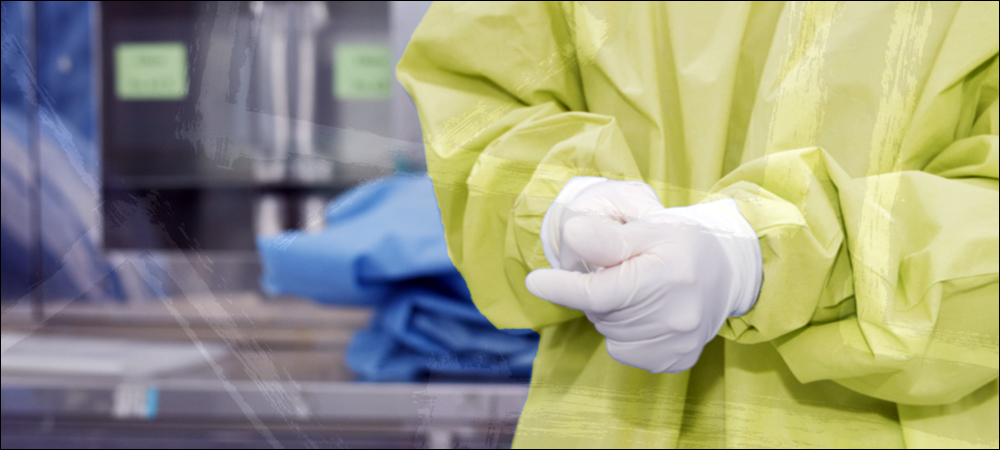Every time healthcare workers enter isolation units in which COVID-19 patients or those with other communicable diseases are being treated, they first don a dedicated isolation gown that must be removed when they leave the units. This personal protective equipment (PPE) is often disposable, to ensure that gowns are always available and to make the process of using and discarding them easier. But the environmental impact and cost of disposables are high. Sometimes, a gown may be used for only 15 minutes—while an employee examines a single patient, for instance—before it is then removed and never worn again.
Australian hospital protective clothing manufacturer Welspring, in partnership with tracking technology provider RFiD Discovery (part of ID solutions company Paragon ID), has built a solution leveraging reusable garments. It includes the ongoing management of those items throughout their use, laundering and return to clean inventory, as well as the tracking of each event to ensure the maximum number of washes is not exceeded. Disposable garments typically cost about $2 each, though the price has been rising, and present a variety of environmental problems. They contain petrochemical products and must be shipped to a user’s site, and they must then be sanitized after being discarded, before ending up in a landfill.

Welspring’s reusable gown
“That’s an awful lot of wastage for a 15-minute use,” says Brendon Rowse, Welspring’s cofounder and managing director. A less-expensive alternative to disposable gowns is reusable garments, he notes, though the traditional challenge has been how to ensure the items move through laundry and sanitization, then back into clean inventory, in a timely and reliable fashion. Welspring is employing technology from RFiD Discovery, including a UHF RFID tag built into each garment, readers deployed at a laundry site, and software to manage the collected data.
The Welspring garment is designed with a lifespan of up to 300 washes, Rowse reports. Each gown is designed to be comfortable, he says, while providing Level 3 fluid resistance, welded seams and an impervious outer membrane with an absorbent layer at the center. The gown is designed to be cooler and more comfortable to wear than disposable alternatives, which Rowse says healthcare workers have reported feeling “like wearing a plastic bag.”
A washable UHF RFID tag is incorporated into a pouch along the garment’s hem at the point of manufacture. Each tag is encoded with a unique ID number that is linked to that specific item’s details and stored in the software. RFID readers are deployed where needed; the solution can include handheld, tunnel, portal and overhead readers, according to Arron Duddin, RFiD Discovery’s director of smart solutions. The company works with a variety of reader vendors, depending on the needs of each customer.
Healthcare workers can simply take a garment from the clean storage area at a hospital or nursing home, then discard it in a dedicated hamper as they leave. The garment passes readers when it enters the laundry or during the laundering process, and RFiD Discovery software captures that event. The software consists of a cloud-based database accessible via both Welspring and the system’s users, and information can also be stored at a local facility and accessed via an Android-based app on a handheld reader or device.
For instance, laundry workers using handheld readers can scan a tag ID and view care instructions for a particular item via the app. They can view or receive an alert related to the number of times an item has been laundered, and if they examine the garment and find damage, they can enter those details while reading the tag in order to update the item’s status in the software. If portal readers are employed, the process becomes more automated, and the same alerts and information are captured and forwarded to the appropriate parties as needed.

Brendon Rowse
Welspring can view information about the system in real time and for historical analysis, while laundries and hospitals have access to that data as well. The software can alert workers if a garment is approaching or has passed its cycle limit. “We can generate reports for our customers,” Rowse states, which indicate details about the garments they have used, along with any related information, such as when inventory goes missing, how often it is used, when new items need to be purchased, or if the amount of inventory onsite is too high or low. The system also enables billing for missing items, with data proving when a given garment went missing.
Since late last year, Welspring has put the garments through laboratory testing, and it has piloted the system in a real-world environment at several sites. One healthcare facility in Melbourne began piloting the technology in July 2020, and a nursing home has been testing the system as well. During that trial, there were two positive COVID-19 cases at one of the company’s multiple sites, but the organization found no further cases, partly due to control measures and the use of Welspring’s reusable gowns. Based on the success of those pilots, Rowse says, “What we’re offering is the delivery of a technology package that will work in an industry laundry structure, or we can help set up the solution according to their requirements.”
In the United Kingdom and Australia, for instance, it is mandated that garments undergo decontamination for at least three minutes at 71 degrees (160 degrees Fahrenheit). The maximum temperature for a garment is 90 degrees Celsius (194 degrees Fahrenheit). Welspring is in the early stages of conversations with several customers in Australia, as well as the U.K.’s National Health Service (in the latter case, the conversations are taking place via Paragon ID). Welspring’s and RFiD Discovery’s partners provide reader installation and training on the system’s use. Because many NHS trusts already utilize RFID technology—specifically the RFiD Discovery system—to track equipment and assets at its hospitals, the organization is poised to view the onsite movements and usage of PPEs.

Arron Duddin
The technology could help hospitals and care facilities reduce the amount of inventory they require onsite, Rowse notes, since it will provide clear visibility into their gown stock counts. “One of the key issues has been hoarding,” he explains, with workers stashing assets to ensure they can access them when necessary. By preventing hoarding, he says, the system can help facilities reduce the amount of inventory they maintain onsite. Ultimately, he predicts, the technology will help ensure that each garment has been properly cleaned and sanitized before being used around a patient. “The safety factor is fundamental. That’s not a benefit—it’s an expectation and requirement.”
According to Rowse, the solution can make sure healthcare institutions never run out of PPEs. Since the pandemic began, the cost of disposable gowns has increased, which means reusables could save money over time. “While there’s a per-use laundry cost,” he says, “it is less than the cost for disposable stock and disposal.” Welspring is taking a long-term approach beyond COVID-19, he adds, noting that by tracking each item via RFID, “We can make everything work in a way that was difficult to achieve in the past.”
In the meantime, Duddin says, RFiD Discovery provides tags for a variety of PPE items, such as fire brigade equipment, enabling organizations to track uniforms, face shields, gloves, service helmets and more. The latest version of the company’s washable label for reusable PPEs has been in use for the past few years, he reports. The system also comes with a sterilization module that could be used with surgical tools.


